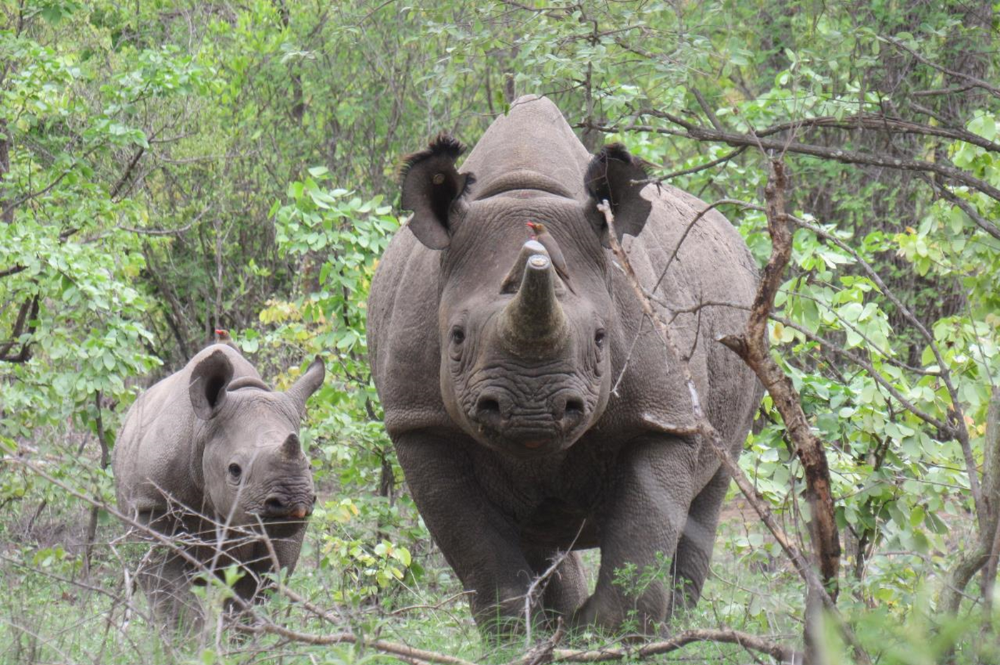Rhino tracking tech has come a long way over the years, contributing significantly to our ability to monitor, protect and improve our understanding of these fascinating creatures.
Since the early 1990s, the Lowveld Rhino Trust has been testing and using rhino-tracking technology. We’ve used the information gained to support large-scale dehorning and translocation operations, required in response to heavy poaching in the Zambezi Valley. Here’s a brief overview of the technology we’ve used, and how things have changed over time.
Collars, anklets and horn transmitters
Early efforts to attach Very High Frequency (VHF) tracking devices using neck collars (which are commonly used for many other species), proved difficult. Rhinos’ large, tapering necks either pushed the collars against their ears causing lesions, or forced them off completely. Ankle devices proved more effective, yet the risk of wounds to a rhino’s leg remains. In addition, ankle devices often break when a rhino bangs them against rocks, tree stumps, or other natural features.
VHF devices embedded in a rhino’s horn have, in contrast, remained a staple in our rhino-tracking toolbox. There are sometimes problems with the quality of devices available (poor signal range, early battery failure, duty-cycle shifts such that devices start turning on only at night). But overall, VHF horn transmitters provide a simple and (generally) reliable tracking aid. Between 18 and 24 months after insertion, they naturally grow out of the horn, so a rhino doesn’t have to be re-darted to remove the device once it stops working, unlike with ankle bracelets. Today, VHF horn transmitters are often our ‘go-to’ for emergency cases that require closer and consistent monitoring, such as tracking injured animals or moving orphans back into the bush.
Over the years, we’ve experimented with different technologies and fitment techniques – thankfully often with much more success than the early collars.
Radio Frequency Identification
Radio Frequency Identification (RFID) tags are small, and low-energy-demanding devices that are widely used in commercial applications. Mounted on cattle ear tags, these devices are attached to a rhino’s ear during routine operations. RFID readers are then placed at varying locations (often waterholes), to record the ID of the visiting animals, helping us to keep track of dispersing sub-adults – often a challenge in large areas. Thankfully, the tags are a relatively cheap option – a critical factor given that rhinos often snag them on bushes!
Upcoming technology
Currently, there’s an exciting evolution of “Internet of Things” (IoT) devices, which transmit GPS (and other) data as weak signals over wireless networks. The big advantage of these networks is that they only send a small amount of data to local gateways. In practice, this means that we can gather the information we need from much smaller devices (traditional satellite GPS units are inherently large and heavy). The new IoT networks make it possible to use a device small enough to be implanted into a horn.
To date, no IoT developers can claim to have produced a device with enough durability and performance to reliably meet our rhino-tracking needs. Yet, the potential is clear: it’s just a matter of time before we have this tool available, possibly in several versions.
Written by Natasha Anderson, Monitoring Coordinator, and Raoul du Toit, Director, Lowveld Rhino Trust. A version of this article was originally printed in our annual supporter magazine, The Horn.









